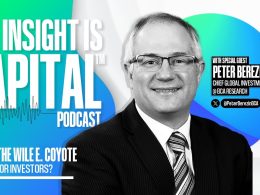by Avi Hooper, Senior Portfolio Manager, Invesco Canada
The global financial crisis of 2008 has become a blueprint for how policymakers are acting today to smooth the negative growth and inflation shock from the ongoing health pandemic. Many global central banks have been forcefully pushing liquidity into markets to foster economic stability. Collapsing domestic demand and falling inflation has enabled an environment of co-operation between central banks and governments to ensure liquidity remains abundant and activity levels can be sustained without interruption.
We are in a global balance sheet recession.1 When the private sector, both companies and households, are unwilling or unable to borrow money for consumption and investment, the public sector (i.e., governments) must carry the mantle of primary borrower and intermediary of credit throughout the overall economy. This environment of government dependence and large central bank balance sheets is expected to remain for a multi-year time period. Keeping the cost of capital low for global borrowers will likely remain a key feature of global fixed income markets.
Growth and inflation are the ultimate objectives of today’s policies. The global economy will take some time to recover its previous size. Unemployment rates are expected to remain elevated as companies reduce their costs from labour to maximize profits from slowing revenues. Beyond the temporary effects from government wage subsidies, the trajectory for wage growth is downwards. Deflation2 risks are high and all efforts must be made to ensure some price inflation remains.
The bond market is priced for an extended period of low interest rate policies globally, leading to a continued steepness in yield curves.3 While inflation expectations are rising, actual inflation4 is lagging. Supply-related inflation, for example from food prices, have risen, but are likely temporary as food production comes back online. Structural forces from automation and other productivity-enhancing technologies continue to suppress inflation.
Bond issuer selection has never been more important as some sectors of the economy are likely to perform better than others as we come out of the prevailing recession. Companies have been able to build sizeable liquidity cushions to absorb any further economic shocks from the virus. Our focus continues to be on adding value through issuer selection across global investment grade credit. Specific opportunities in high yield and across emerging markets are increasingly evident as investors seek return and government policies keep interest rates low for an extended period ahead.
This post was first published at the official blog of Invesco Canada.















